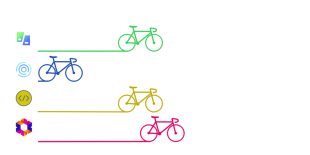While the Cloud offers great convenience and flexibility, the operational cost for applications deployed in it can sometimes be significant. In this article, we show a way to substantially reduce operating costs in latency-sensitive Event-Driven Architecture (EDA) Java applications by migrating from Kafka to Chronicle Queue open-source, which is a more resource-efficient and lower-latency queue implementation. What is EDA? An …
Read More »TimeLine Layout
January, 2023
-
11 January
Why Many Developers Don’t Write or Give Talks and How to Overcome Challenges
I asked on Twitter and LinkedIn why many developers don’t write or give talks, and I was amused by the response I received. This article is about that. The problems: It turns out, developers do not write blogs or give presentations for a variety of reasons. Some developers may believe they lack interesting experiences or information to share or that …
Read More » -
11 January
When flows split – An introduction to concurrent programming
A computer program is a nicely ordered flow of instructions, executed one after the other from start to finish… Except when it is not. We often wish to split this flow. Let’s see why and when to do it. Auteur: Vasco Veloso So, what’s concurrent programming? The traditional way of writing programs is to express them sequentially. When one input …
Read More » -
11 January
Post Title
JTest – Roll out your own JUnit-like testing framework This an interactive tutorial as well as an educational project that helps with your understanding of: (oversimplified) internals of JUnit usage of Java annotation and reflection You are given minimum starter code (~20 loc), and will have to develop a simple yet self-contained framework that can be used to write real-world …
Read More » -
10 January
Managing Dependencies in IntelliJ IDEA
In this tutorial, following on from viewing dependencies, we’re going to take a look at managing dependencies in IntelliJ IDEA. We’ll look at different ways to add dependencies to your project, and how to add, upgrade and remove dependencies using Package Search. Add dependencies There are several ways to add new dependencies to your project. From the build file using …
Read More » -
10 January
Kubernetes: terug naar de basis
Kubernetes [1] bestaat al een tijdje en het kubernetes eco-systeem wordt steeds groter en beter. Om er echter zelf mee aan de slag te gaan, werpt bij veel professionals nog wel wat barricades op. Het is groot en veel en moeilijk en je hebt er van alles voor nodig! Dat kubernetes veel kan moge duidelijk zijn, maar waar begin je …
Read More » -
9 January
New Section Added to Foojay.io: Java Quick Start
Foojay.io aims to be the starting point for “all-things OpenJDK,” but during one of my morning walks the idea struck me that this site really needs complete beginner materials, too. As we want to spread the love for OpenJDK, i.e., Java, Kotlin, and other OpenJDK languages, the JVM, and all related technologies, we were missing an important audience: someone who …
Read More » -
9 January
Race tussen remote pair programming tools
Pair programming is in deze tijd van thuiswerken bij veel teams naar de achtergrond verdwenen. Zonde, het is leerzaam en verbetert de kwaliteit van de code. Gelukkig zijn er tools waarmee je op afstand samen kunt coderen. In dit artikel volgen we een wedstrijd tussen een aantal van deze tools; de ‘Tour de Remote Pair Programming’. Deze race kijkt naar …
Read More » -
6 January
Spring Boot – Annotation Reference – 01/b
In the second part of my article series on Spring Boot Annotations, we focus on REST and Spring Stereotype Annotations. In continuation of part 01/a of this article, let’s continue our Spring Boot Annotations journey. What percentage (depth and extent) of Spring Boot Annotations do you think you really know? This includes annotations in all their glory and the power …
Read More » -
5 January
What’s New in Jakarta REST 3.1 in Jakarta EE 10?
The Representational State Transfer or RESTful architecture is a stateless, HTTP based communication standard for modern applications. It was originally proposed by Dr. Roy Fielding in his PhD thesis. It has, over the years, become the default programming language-agnostic means of enabling machine-to-machine communication. An application written in the Django framework in Python can have REST resources that are consumed …
Read More »
 NLJUG – Nederlandse Java User Group NLJUG – de Nederlandse Java User Group – is opgericht in 2003. De NLJUG verenigt software ontwikkelaars, architecten, ICT managers, studenten, new media developers en haar businesspartners met algemene interesse in alle aspecten van Java Technology.
NLJUG – Nederlandse Java User Group NLJUG – de Nederlandse Java User Group – is opgericht in 2003. De NLJUG verenigt software ontwikkelaars, architecten, ICT managers, studenten, new media developers en haar businesspartners met algemene interesse in alle aspecten van Java Technology.


